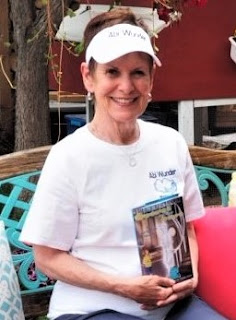By Terry Whalin @terrywhalin
It
was a life-changing moment and a revelation to my writing life. In 2007, I was
a literary agent with, the Whalin Literary Agency, a small Arizona-based agency.
Mark Victor Hansen, co-author for Chicken
Soup for the Soul, invited me to Mega-Book Marketing University in Los
Angeles. About 400 people attended this event with well-known speakers over
several days. At that point in my writing life, I had written over 50 books for
traditional publishers. Two of my proposals received six-figure advances and
publishers made beautiful books and got them into bookstores. Yet my books were
not selling and I had the negative royalty statements from my publishers to
prove it.
Throughout the conference, I listened carefully and took notes. One of the speakers was Jack Canfield who had just published The Success Principles. For years he has studied what it takes to be successful and I certainly wanted to be successful as an author. The first of his 64 principles is: “Take 100% Responsibility for Your Life.”
I didn’t want to take 100% responsibility. I wanted to write the books and then have my publisher sell the books. Wasn’t marketing their responsibility? Didn’t they sell the books into the bookstore? I was writing excellent books and delivering them on deadline and working through each editorial process. But I was doing very little to market the books. I had a single website with my name but no email list, no social media, no blog or other type of writer’s platform. At Mega-Book Marketing University, I learned publishers make books and distribute them to bookstores. Here’s what I was missing and I learned: the author drives readers into the bookstore (brick and mortar or online) to buy those books. Ultimately, the author sells the books to the readers.
Like many writers that I meet, my expectations were unrealistic and I was not taking my responsibility as a writer. I made a decision to change. I started to blog and today my blog has over 1500 searchable entries in it. I began an email list (which continues to be a unique way to reach my readers). Also I’m active on social media with over 190,000 Twitter followers and over 19,400 LinkedIn connections. For years, I post on these platforms 12-15 times a day.
If I’m honest, I don’t want 100% responsibility for my own success as a writer. Yet from my decades in publishing, I’ve watched many things go wrong in the publishing process. Good books don’t get marketed and go out of print. Editors change while you are working with a publisher. Those situations are just two of a myriad of things which can push your book off the rails in the wrong direction. I can’t control my publisher, my editor, my agent, my marketing person or ____. But I can control myself and my own efforts.
My acceptance of this responsibility means I have to continually grow and learn as a writer. It means I often take courses or read books and I’m always looking for new ways to build my audience and reach more people. Thankfully as writers we are not alone. Others have shown us how they have achieved success. This path may work for me or it may not. There is no success formula used for every book to make it sell into the hands of readers. Instead there are basic principles others are using to build their audience and find readers. I have one certainty: it will not fly if you don’t try. I continue to take action—and encourage you to do the same. It’s the writer’s journey.
Tweetable:
________________________________________
W. Terry Whalin, a writer and acquisitions editor lives in Colorado. A former magazine editor and former literary agent, Terry is an acquisitions editor at Morgan James Publishing. He has written more than 60 nonfiction books including Jumpstart Your Publishing Dreams and Billy Graham. Get one of Terry’s recent books, 10 Publishing Myths for only $10, free shipping and bonuses worth over $200. To help writers catch the attention of editors and agents, Terry wrote his bestselling Book Proposals That $ell, 21 Secrets ToSpeed Your Success (The Revised Edition). Check out his free Ebook, Platform Building Ideas for Every Author. His website is located at: www.terrywhalin.com. Connect with Terry on Twitter, Facebook and LinkedIn.




















